
Полная версия
Дизайн урока и планирование с нуля / Lesson Design and Planning from scratch. Technology integration
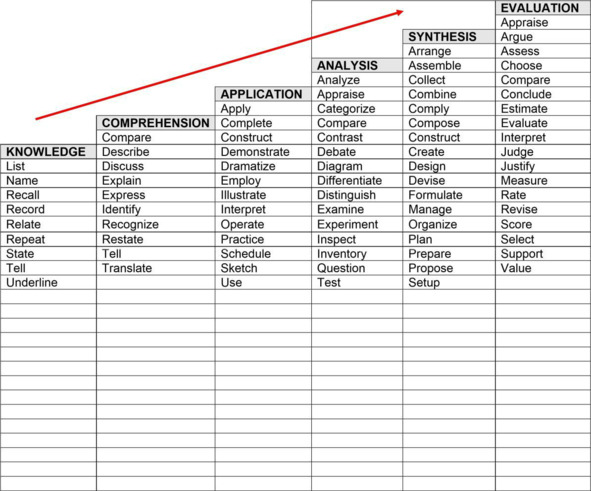
Bloom’s Taxonomy Action Verbs
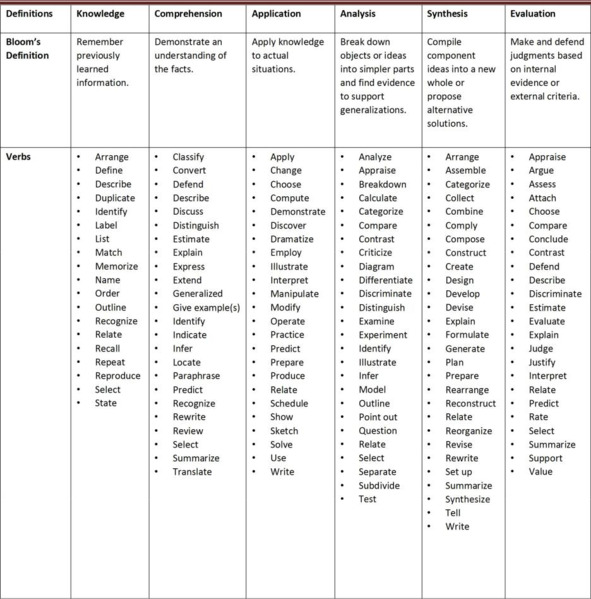
Bloom’s Taxonomy Verbs
Use verbs aligned to Bloom’s Taxonomy to create discussion questions and lesson plans that ensure your students’ thinking progresses to higher levels.
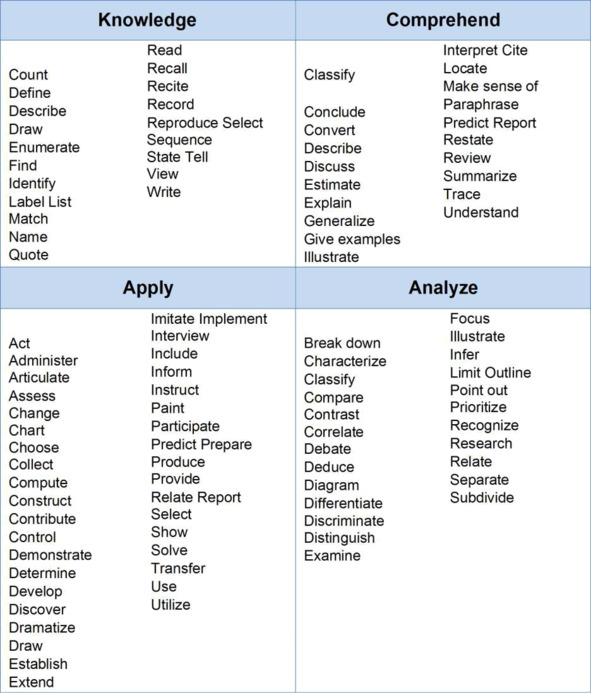
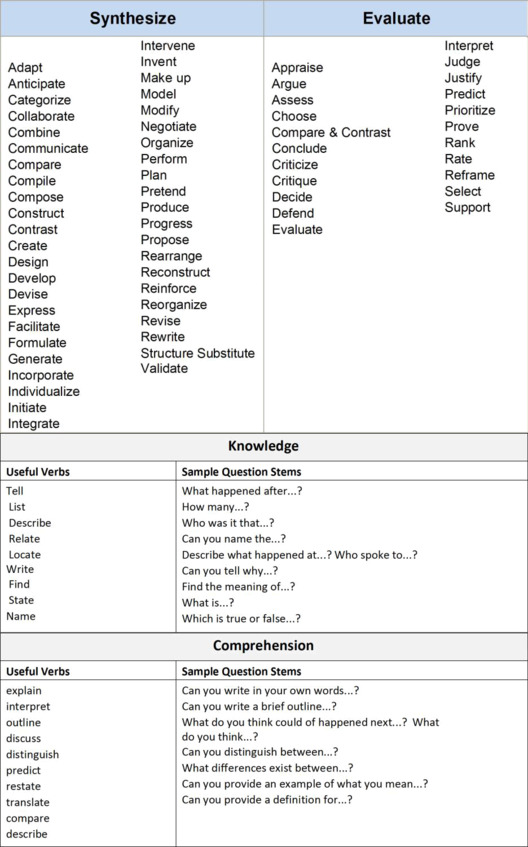
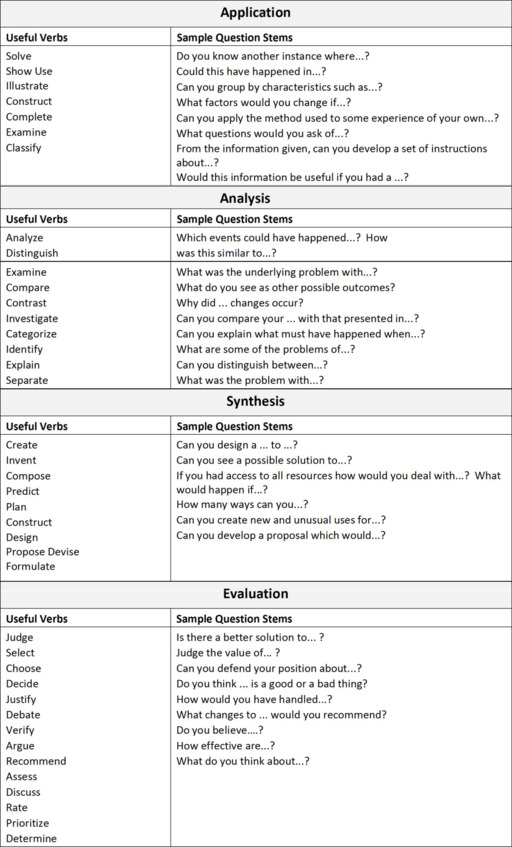
Bloom’s Verbs
And Matching Assessment Types
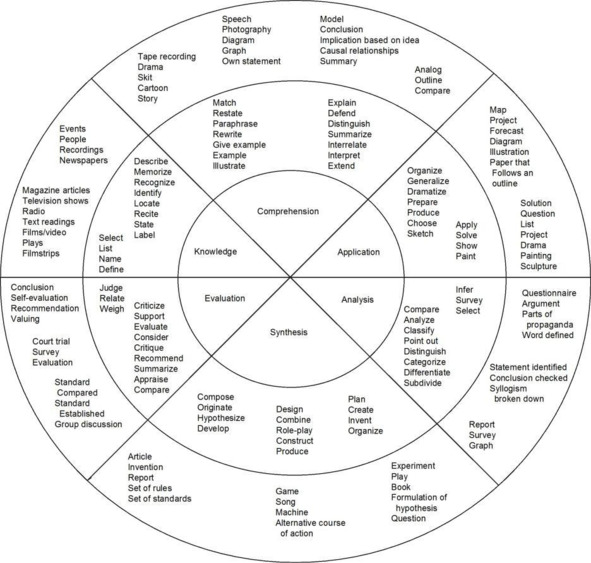
Source: The Tenth Annual Curriculum Mapping Institute: Snowbird Utah, July15—18, 2004 Adapted from Benjamin Bloom
Watch Out for Verbs that are not Measurable
In order for an objective to give maximum structure to instruction, it should be free of vague or ambiguous words or phrases. The following lists notoriously ambiguous words or phrases which should be avoided so that the intended outcome is concise and explicit.
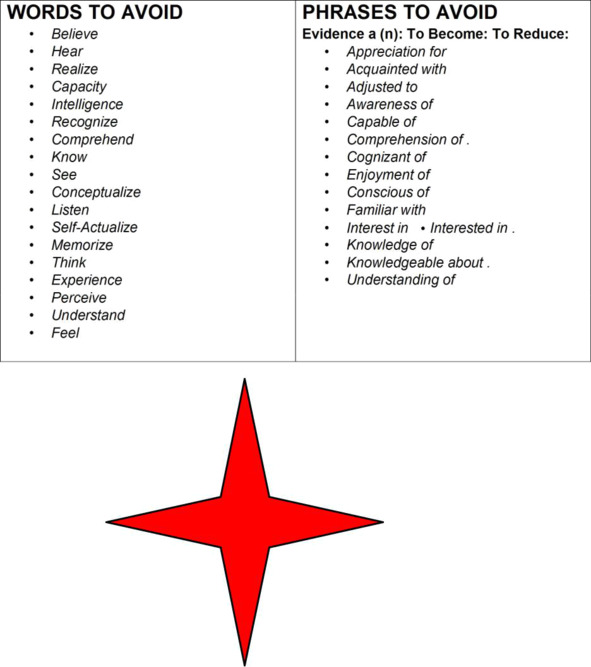
2. Warm-Up Activities

As a teacher, you always have to start with a warm-up when you begin a class to help the students waking up and start thinking about what they learned previously. The warm-up can be a quick review of the subject or a pre-lesson exercise of the new lesson. At the end of the warm-up, the teacher would take a look at where the student is at in terms of the exposure to the material they are going to learn or have learned in the previous lesson as a review.
Without Technology
Talk About…
– You have two minutes… introduce yourself to your partner.
• Now… introduce your partner to the group by sharing one interesting fact they told you.
• SWITCH! Variations Change the topic by giving a question – What did you do on the weekend? – What will you do at the weekend?
– Freestyle
How well do you know the teacher?
– Ask students to write down 5 questions they would like to ask you.
• Ask one student to come to the front.
– This student will now play the role of you and will guess the answer to five of the students’ questions.
• Give a «point» to the student for each correct answer and an ’x’ for an incorrect one.
• Each student takes turns guessing until each student has answered 5 questions.
• Re-ask questions that were answered incorrectly to gain more information about you.
• Once every student has had a chance to be the teacher, answer the questions about you which were left answered incorrectly.
Two Truths and a Lie Two of these statements are true, one is false. Which is which?
A.I’m afraid of horses.
B. I love sushi.
C. I have broken my arm right arm twice.
Picture Differences
• Another paired activity
• Students receive two similar pictures that have small differences • Students must communicate to discover what the differences are
• No peeking!
Picture That!
• Again… pair students
• One speaker, one drawer
• Speaker receives a picture which they must carefully describe to their partner
• Partner draws what is described
• At the end, compare pictures to judge success!
• Level of difficulty can be varied
20 Questions
• Give each student a picture cut out from a magazine
• Students ask each other yes/no questions to gather information and try to guess each other’s pictures
• Partners or group members may ask up to 20 yes/no questions
Can’t Say Yes or No In this game everyone is given a certain number of coins or squares of paper (about 10). Everyone moves around the room starting conversations and asking each other questions. The only rule is that you cannot say the words YES or NO. If you accidentally say one of these words, you have to give a coin or square to the person who you said it to.Try to trick each other by asking questions that you would almost always answer with a yes or no. Think of other ways to trick your friends. Sometimes asking two quick questions in a row works well. (Especially tag questions: Are you new here? This is your first time in America, isn’t it?). This game is a great way to practice using small talk and to add variety to your vocabulary. It also makes everyone laugh.
Fact or Fiction
In this game, one person tells a short story about themselves or someone they know or heard about. Usually, it is something funny or crazy. It can be a true story, or something made up. Example: Josh tells a story about his Uncle Leo who sleeps in the nude. One day Uncle Leo was sleepwalking and he went outside and took his dog for a walk. The next-door neighbor was coming home late from work and saw him! She called the police and he got arrested for being naked in public. Everyone around the room has to say whether they think Josh’s story is a fact (true) or fiction (made up). Josh reveals the truth when everyone has guessed. Members can take turns telling a story.
Chain Fairy tale
This is a fun writing warm-up. Everyone has a piece of paper and writes the first sentence or two to start a fairy tale (not one that already exists).Example: Once upon a time there was a frog that had no legs. He wanted to get married, but there were no female legless frogs in the land. After one minute the leader will say «SWITCH». At this time the writers have to put down their pens and pass the papers. They cannot finish their sentences. Then, the next writers will continue the story. After about ten minutes you will have as many silly stories to read as you have club members. The leader should warn the writers that they will soon have to wrap-up the story during the last two minutes so that each story has a conclusion. Read all of the stories out loud for a good laugh. You can extend this activity by trying to edit each other’s writing and spelling errors.
Jeopardy
In this game, which is based on the famous game show Jeopardy, everyone writes down ten answers to questions about themselves. After writing down the answers, people have to form pairs or small groups and try to find out what the questions are. Example: (answer = purple) «What is your favorite colour?» «Blue.» «What colour do you hate?» «Green.» «What colour is your underwear?» «Purple!» You can stop at three guesses if you want, or keep going until someone in the club can guess the question.
Hot Seat
In this game, the club is split up into two teams. One member from each team sits facing the group. The leader holds up a word (or writes it on the board if you are in a classroom) for all of the team members to see except for the two players in the hot seats. The teams must try to get the person in the hot seat to guess the word or phrase. The first person to guess correctly gets to stand up and a new member from their team takes the hot seat. The person on the other team has to remain in the hot seat until she gets an answer first. You can keep score or just play for fun. This game can also be played in pairs. One pair member closes their eyes while the leader shows the word to the other pair members. The first pair to get the word right gets a point. Warning! This is a loud game because people tend to get excited and yell!
Broken Telephone
This is a listening and pronunciation activity that always gets people laughing. The leader first must think of a sentence or phrase and whisper it to the person beside her. That person will then whisper what she heard to the next person. Each person can only say, «Can you please repeat that?» one time. When the message reaches the end of the chain that person must speak out loud. Oftentimes the message will be completely different when it reaches the end. Try to find out where the chain broke! In a big group, you can send the message two ways and find out which team comes closest to the real message. (A famous example is the army message that started as «Send reinforcements, we’re going to advance» and ended as «Send three and fourpence, we’re going to a dance.»)
Find Pikachu
The idea of this activity is simple: students go around the school to hunt for Pokémons trapped in the QR world! Each QR code contains a Pokémon with varying points depending on its level or tier, and a corresponding question or task. Of course, students must be able to answer the question, or do the task successfully in order to earn the points of the Pokémon they had caught!
Create a separate code with game rules that students scan before they go outside.

1. Ready your questions or tasks for
students.
It can be review questions from your topic
or unit, or simple tasks that students can
do during the activity.
For example, you can ask them to create a 6-box comics strip on their notebook or research something on the internet.
2. Download Pokémon characters that you want to use.
This website has a list of different Pokémon characters with their corresponding tiers or levels. Pick the characters that you want to include in the game according to the number of questions you have, i.e., 15 characters for 15 questions. A quick search on Google images will give you bunch of images to download.
3. Assign a question or task to a character
Easier questions should be assigned to lower-tier characters while challenging questions or tasks should go with the god-tier Pokémons. Feel free to vary the points as you wish, i.e.,
level 1 Pokémon = 1 point;
level 2 Pokémon = 3 points;
god-tier Pokémon = 5 points.
How to Create the Codes
QR Info Point https://qrinfopoint.com/
allows you to upload multimedia into your codes which is very crucial for this type of activity. Most importantly, it’s 100% free!
Create an account with QR Info Point. Creating an account lets you create dynamic QR codes (meaning, editable codes) which you can edit anytime!
Type QR Code’s title, for example: «Pikachu – Game Rules» (yes, I use Pikachu to introduce the game to the kids!)
Choose template, for example: «Personal» but this is optional.
Upload your multimedia content which, in this case, is your Pokémon character!
Change the text of the template, edit your content: type your question for the corresponding Pokémon character.
Click on «Save» button to generate QR Code.
Download the generated code as image file and rename, for example «Pikachu – Game Rules»
Repeat steps 1 to 7 for the remaining Pokémon characters/questions.
How to Set up and Play the Game
Print and cut out your generated QR codes. Tip: use PowerPoint (A4 size) to organize your QR codes. You can add a title or additional description on the printout.
Place printed QR codes across the school.
Put students into small teams or pairs with one person owning a mobile device.
Students search for and scan each QR code to catch a Pokemon and see the question or task.
Students work together to answer to the question or perform the task.
The team earns the point for the Pokemon if they got the correct answer.
The team with the highest points wins the game.

Requirements
Ask students in advance to download any FREE
QR code reader app
Students must have internet access during the game as the codes are linked to a 3rd party website (QR Info Point)
Warm-up activities using technology

Pictures
Another activity is by showing your learners some very close-up pictures you took with your smartphone. This can be done very quickly by going into your staffroom or looking around your desk and taking very, very close-up pictures of different objects, showing them to the students and trying to get them to guess what they are. You can display these pictures on the class projector in your our classroom or you can send them to the students if they have mobile phones with an Internet connection and they can access them through email. A follow-up to this, assuming you have the time, is that you can get the students to do this themselves. They can go for a few minutes around the school with a partner and take some pictures of things close up and then show them to the other members of the group. Alternatively, they could do this before they come to class and send them to the class.
Word clouds
An engaging way to revise a text and the accompanying vocabulary that you have recently looked at in class is to create a word cloud and then getting students to look at the word cloud to try to reconstruct the text. These word clouds generally emphasize keywords and will make words that appear more frequently bigger. This helps students because they were able to identify repeating ideas or common themes in the text and this helps them to reconstruct
it. To create a word cloud, you can go to popular websites such as Wordle or Tagxedo. This can be printed out from the website or you can just show on the board. A quick online quiz
A quick online quiz can be a great way to start a lesson and there are loads of websites out there for creating them. The one I tend to use most is Socrative simply because it’s so easy to use both for the teachers and the students. The teacher does have to register to make a quiz but it’s a fairly painless procedure. You can build multiple-choice or short-answer quizzes, and these can easily be made available to the students by them going to a particular webpage on either a computer or their mobile phone (there is also a mobile app) and just typing in a room number that the teacher assigns. They can then take the quiz and get instant feedback on their answers. As a teacher, you can display the progress of the students on the board and you can control whether the students go at their own pace or a pace you decide. Again this is quite nice the checking recent vocabulary Grammar or anything else you want to revise or recycle from your lessons.
Hunt for QR Codes
This game is similar to the classic treasure hunt game except that students have to search the school for QR codes which contain questions or clues to the game.
Playing this fun activity is easy. First, I prepare a list of questions from the topics that I want my students to learn or revise. Then I create and print the QR code for each question and place them across the school.
Students are put into small teams or pairs with one person owning a mobile device. They need to download a QR code reader first which is free on App Store or Google Play. Internet connection is not required once they have the app since the QR codes decode as text files. Now, students need to search the school for these clues and scan each QR Code to get each question. They must then work together to find the answer to this question. The team that brings the most number of answers wins the game
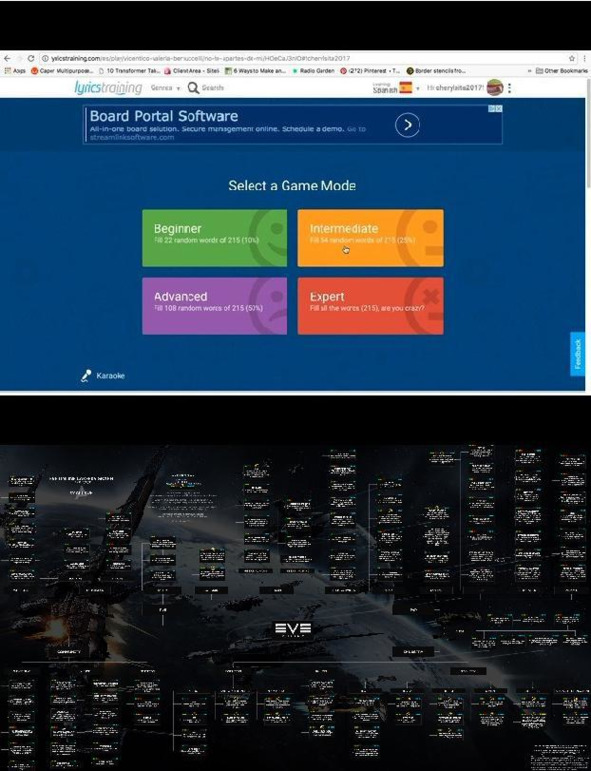
– —
– EVE Online. Practice running the most powerful company in the world so you can sharpen your skills for
management in the real world.

2 – ElectroCity. Created in New Zealand for middle-school aged students, ElectroCity teaches about energy, environment, and more as the students build and manage their own towns.

3 – McDonald’s Video Game. Choose your language, then dive into this game that teaches about the harmful effects of fast food with a heavy dose of irony.
Collection of interactive whiteboard games for educators Pic-Lits – Drag words onto photographs to describe the scene or mood. The default language is english. A PIC-LIT is a combination of words placed on an image to capture the essence, story, and meaning of the picture. It can be a caption, a sentence, a story, a paragraph, a poem, a quotation, and more. You can create a PIC-LIT using Drag-n-Drop keywords or in Freestyle by typing your own words.

– — PIC-LITS.COM is an e-learning website that utilizes photography and word banks (keywords) to improve literacy skills via writing. It is a teaching tool and student learning platform that not only develops writing but helps to improve reading skills as well. With an emphasis on visual learning, the user is engaged by doing. The proprietary site is a vehicle for creativity, fun, and learning that lasts. It is also interactive and a social medium for people of all ages globally.
Practice Lab 2. Create your warm-ups
Steps
1. Warm-Ups without Technology.
2. Then think what technology would be most
appropriate.
What Makes a Good
Warm-up?
– Short (10 – 15 minutes)
– Nothing new or difficult
– Reviews a previous lessons or skill
– Sets the stage for an upcoming lesson
– Fun, interactive, communicative
– Gets students moving!
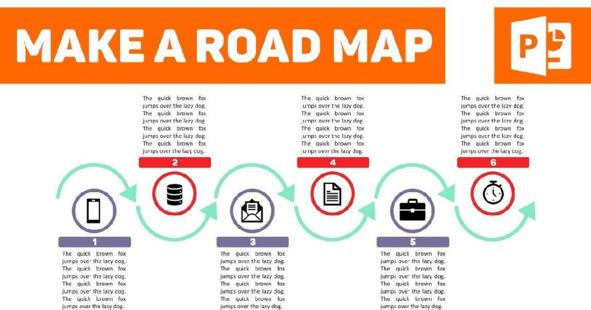
Warm-Ups: «Phrasal Verbs Game». My example. Reading/Writing Lesson
My Sample 1 Warm-Ups without Technology
Material
Phrasal Verbs cards
– Teacher will divide the class into 2 teams to play the game in whole class.
– Teacher will request a volunteer who wants to explain the words to the team members, from both teams.
– Students will play the Phrasal Verbs guessing game again to win the other team. During the games, teacher will mark their score on the board.
– If there are the Phrasal Verbs that nobody knows, teacher could explain the meaning after the game. If at least one student knows the Phrasal Verbs, teacher could make him explain the Phrasal Verbs to the classmates.
Then think what technology would be most appropriate
https://www.youtube.com/watch?v=kSntadOvQAY&t=56s Phrasal Verbs in Context of Movies. Video clip
– Teacher will divide the class into 2 teams to play the game in whole class.
– Teacher will request a volunteer who wants to explain the words to the team members, from both teams.
– Students will play the Phrasal Verbs guessing game again to win the other team. During the games, teacher will mark their score on the board.
– If there are the Phrasal Verbs that nobody knows, teacher could explain the meaning after the game. If at least one student knows the Phrasal Verbs, teacher could make him explain the Phrasal Verbs to the classmates.

My Sample 1 Reading/Writing Lesson
Dreaming.
Developing Myself 114+Intermediate (Reading skills including focusing on topic sentences plus using context to work out the meaning of unknown words. Follow on activities include thinking of ways to search for eternal youth).
Make associations between new information and their prior knowledge, use new information to clarify or modify their prior knowledge, read and listen between lines, relate new concepts to their own lives, to their experiences, knowledge, beliefs, and feelings. Create a mental, oral and written summary of information.
Keep Your Dream. Welcome Reader https://www.moralstories.org/keep-your-dream/ Dreams are very important in life. They motivate, inspire, improve and help you in achieving any goal that you want to achieve.
Lesson Objectives
– Students will be able to define vocabulary words,
identify the main characters, describe the scenes and setting.
– Students will be able to explore a dream ambition.
– Students will be able to write imaginatively, creatively and thoughtfully, producing texts that interest and engage the reader.
– Students will be able to generate and harness new ideas and develop them in their writing.
Business/Materials
– https://www.moralstories.org/keep-your-dream/ Keep Your Dream. Welcome Reader
– A projector
– A Smart Board
– Computers with internet access
Warm-up (with Technology. Video)
«Phrasal Verbs Game»
1 – Phrasal Verbs
– The teacher will divide the class into 2 teams to play the game in the whole class.
– The teacher will request a volunteer who wants to explain the words to the team members,

from both teams.
– Students will play the Phrasal Verbs guessing game again to win the other team. During the games, the teacher will mark their score on the board.
– If there are the Phrasal Verbs that nobody knows, the teacher could explain the meaning after the game. If at least one student knows the Phrasal Verbs, the teacher could make him explain the Phrasal Verbs to the classmates.
My Sample 2 Warm-Ups without Technology
Listening/ Speaking Lesson
Warm-Ups: “ What do you know about ……?» What’s in the air?
Set a five-minute time limit and in groups have students think up and write down as many facts as they can about what’s in the air?
Then think what technology would be most appropriate.
– Display the question What`s in the air in fullscreen mode withPoll Everywhere https://www.polleverywhere.com
– Set a five-minute time limit and in groups have students think up andtype down as many facts as they can about what’s in the air?
– Instructions view allows you to accept responses on an active question without showing the live incoming responses to your audience.
Exploring Social Issues

14+
Intermediate
Air Quality Concerns Close Schools, Colleges https://www.youtube.com/watch?v=Mter5lTxT2
Students reflect on what they have learned about air pollution

1 – Air Quality Concerns Close Schools,


